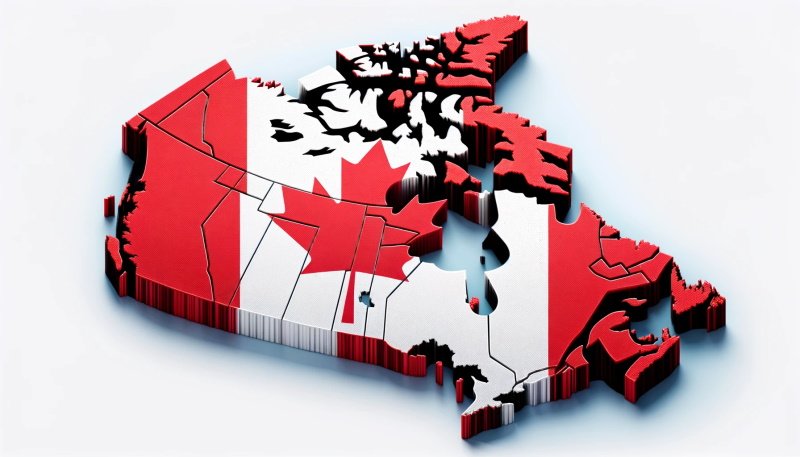15 Things Invented in Canada That Changed the World
Canada is known for more than its vast land and scenic beauty; it’s also a hub of groundbreaking inventions, contributing significantly to global innovation.
This exploration delves into 15 iconic things invented in Canada, uncovering their origins and wide-ranging applications that have shaped our modern world. Canadian inventors have made remarkable strides across various fields, showcasing their ingenuity and impact on a global stage.

List of 15 Life-Changing Things Invented in Canada
- Insulin
- Walkie-Talkie
- Pager
- Electric Wheelchair
- Java Programming Language
- Plexiglas
- IMAX Film Format
- Snowmobile
- Telephone
- Canadarm
- Wireless Radio
- Standard Time Zones
- Electric Light Bulb
- Cardiac Pacemaker
- Basketball
The Crucial Discovery of Insulin
Frederick Banting and Charles Best discovered insulin in 1921, a monumental advancement in medicine. This discovery has been crucial in managing diabetes, allowing millions of people worldwide to lead normal lives. Insulin therapy is now a cornerstone in the treatment of both type 1 and type 2 diabetes, playing a vital role in controlling blood sugar levels and preventing complications associated with the disease.
Walkie-Talkies: Revolutionizing Communication
The invention of the walkie-talkie by Donald L. Hings during World War II transformed how communication occurs in challenging environments. Initially used by military forces, these devices are now essential in various sectors like event management, outdoor activities, and emergency response teams, providing a reliable means of communication where traditional networks may fail.
Pager: Paving the Way for Modern Communication
The pager, invented in 1949 by Canadian-born Alfred J. Gross, revolutionized personal communication. This compact device was crucial for professionals like doctors and emergency responders, providing swift message delivery regardless of location. Although now overshadowed by mobile phones, the pager was pivotal in developing modern wireless communication technologies, marking a significant step in the evolution of portable communication devices.
The Electric Wheelchair: Enhancing Mobility
The electric wheelchair, invented by George Klein, revolutionized mobility for those with disabilities. Beyond individual use, these wheelchairs have found applications in hospitals and elderly care facilities, facilitating easier movement and independence for patients and residents with mobility challenges.
Java Programming Language: A Technological Milestone
James Gosling’s development of the Java programming language has been pivotal in the digital world. This language is fundamental in Android smartphone applications, web-based content, and large-scale enterprise systems, making it a backbone of contemporary software and application development.
Plexiglas: A Versatile Material
William Chalmers’ invention of Plexiglas has seen applications far beyond its initial use. Today, it is used in everything from shatterproof windows and aquarium tanks to protective barriers in banks and stores, offering a durable and safer alternative to traditional glass.
The Invention of IMAX
The IMAX film format, a Canadian invention, has not only enhanced cinematic experiences but also has educational applications. It’s used in museums and science centers around the world, providing immersive educational content on a grand scale, making learning an extraordinary visual experience.
The Creation of the Snowmobile
Joseph-Armand Bombardier’s snowmobile opened up new avenues for winter travel. Besides recreational use in snowy terrains, snowmobiles are essential for winter rescue operations and in rural areas for transportation where conventional vehicles cannot operate due to heavy snowfall.
The Invention of the Telephone
Alexander Graham Bell’s telephone, patented in Brantford, Ontario, revolutionized global communication. Beyond personal communication, the telephone system became the backbone of business operations and emergency response systems, fundamentally altering how information is conveyed and decisions are made.
Canadarm: A Triumph in Space Engineering
The Canadarm, used in space missions, has been instrumental in satellite repairs and the assembly of the International Space Station. Its technology has inspired robotics in surgery and manufacturing, allowing for precise and controlled operations in various fields.
The Wonder of Wireless Radio
Reginald Fessenden’s wireless radio broadcast in 1906 laid the groundwork for modern broadcasting. Today, radio is used not only for entertainment and news but also in disaster management for communication when other systems are down, proving vital in emergency and relief efforts.
The Birth of Standard Time
Sir Sandford Fleming’s concept of standard time zones is integral to global coordination today. It is essential for international travel, business operations across different continents, and even for the synchronization of internet-based activities, making global collaboration seamless.
The Electric Light Bulb
Henry Woodward and Matthew Evans’ work on the electric light bulb, later developed by Thomas Edison, revolutionized indoor lighting. Beyond home use, electric lighting is crucial in industries, healthcare, and public safety, illuminating our world after dark and improving safety and productivity.
The Development of the Pacemaker
John Hopps’ invention of the pacemaker has been a game-changer in cardiology. Pacemakers are vital in treating heart rhythm disorders, improving the quality of life for patients, and are continually being refined to enhance their functionality and integration with other medical technologies.
The Basketball Concept
James Naismith’s game of basketball has grown into a global phenomenon. It’s not only a popular professional sport but also an important tool in physical education programs worldwide, promoting fitness, teamwork, and cross-cultural connections.
Conclusion
Canada has given the world a range of inventions in areas from medicine to sports, highlighting the country’s talent for innovation. These 15 things invented in Canada offer a glimpse into the nation’s inventive spirit and its commitment to improving life.
These creations are much more than individual successes; they represent a collective legacy of Canadian innovation that continues to impact the world. Each one demonstrates how a single good idea from Canada can make a significant difference. As we celebrate these Canadian achievements, we also eagerly anticipate future inventions from Canada that will keep enhancing our lives.
Related Articles
-

What is Canada Thanksgiving About?
Canada Thanksgiving is a special day marked by gratitude, family gatherings, and delicious food. It’s a time when kitchens bustle,… Read more
-

15 Things Invented in Canada That Changed the World
Canada is known for more than its vast land and scenic beauty; it’s also a hub of groundbreaking inventions, contributing… Read more
-

What Is: Population of Immigrants in Canada
The population of immigrants in Canada, steadily growing over the years, has transformed the country into a mosaic of cultures… Read more






